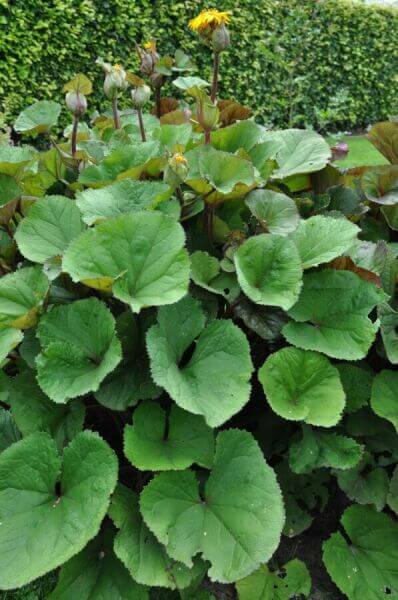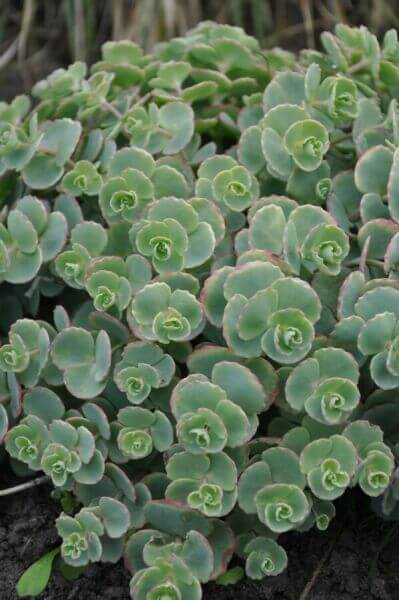Hedge Plants For Living Walls
Hedge Plants For Living Walls
Blog Article
Hedge Plants For Playground Borders
Enhance your garden's allure with lavish hedge varieties such as Yew (Taxus), Thuja, Laurel, Photinia, and Bamboo, celebrated for their structural integrity and ecological advantages.
Yew and Thuja offer evergreen protection and winter season durability, while Laurel offers fast development and broad, fragrant leaves.
Photinia includes seasonal charm with its dynamic red foliage, and Bamboo lends a low-maintenance, peaceful atmosphere.
These hedges improve air quality, minimize sound, and create tranquil, personal spaces.
Appropriate planting, spacing, and upkeep ensure vigorous development and eco-friendly harmony.
Check out how these lavish varieties can elevate your garden's charm and wellness.
Secret Takeaways
Change Your Garden With Lush Hedge Ranges
- Select Yew for its dense, evergreen growth and exceptional durability.
- Opt for Laurel for its fast development and broad leaves, making sure fast privacy.
- Choose Photinia for its dynamic seasonal foliage, which turns a striking dark red.
- Use Bamboo for a low-maintenance, winter-hardy hedge with visual appeal.
- Area plants 2-3 per meter and prune frequently for optimum development and health.
Popular Hedge Plants
When transforming a garden with lush hedge varieties, it's necessary to think about popular hedge plants such as Yew, Thuja, Laurel, and Photinia due to their distinct attributes and advantages.
Yew (Taxus) is extremely respected for its longevity and dense, green growth, making it a prime choice for enduring landscapes.
Thuja is noted for its evergreen foliage and robust winter season strength.
Photinia includes seasonal vibrancy with red leaves that darken with time, developing vibrant visual appeal.
Laurel provides fast growth and aromatic, broad leaves, perfect for fast privacy.
Additionally, Bamboo is an excellent option for atmosphere, using a low-maintenance, winter-hardy choice that improves the garden's aesthetic with its classy, swaying walking canes.
These selections cater to a range of horticultural requirements and preferences.
Advantages of Garden Hedges
Garden hedges provide a wide variety of benefits, making them an important addition to any landscape. These natural barriers are economical to implement and supply considerable wind protection, boosting air flow and contributing to sound reduction. The thick foliage of hedges like Thuja and Beech makes sure personal privacy by obstructing presence, producing a serene and remote environment.
Hedges also play a vital role in microclimate guideline, offering a steady environment that fosters plant development and reduces temperature level fluctuations. Their complex leaf structures filter pollutants, enhancing air quality and contributing to a much healthier garden ecosystem.
Furthermore, hedges excel in sound reduction, taking in and deflecting acoustic waves to lower ambient noise levels. This dual functionality of supplying both visual and acoustic personal privacy boosts the overall serenity and visual appeal of any garden.
Planting and Upkeep Tips
For an effective hedge, meticulous preparation of the planting area is important. Make sure the soil has appropriate pH and drain to support strong root advancement.
Area the plants properly for the picked species. Water the hedge frequently during its initial growth phase, changing as required with seasonal modifications.
Carry out a organized bug control and illness avoidance method, utilizing natural or chemical treatments when essential. Frequently check for aphids, termites, and fungal infections.
Apply mulch to keep wetness and suppress weeds. Seasonal pruning promotes thick growth and air flow, important for plant health.
Following these guidelines will help you cultivate a vibrant, well-maintained hedge that enhances the appeal of your garden.
Spacing and Cutting Standards
Spacing and Trimming Guidelines
Correct spacing and cutting are important for cultivating healthy, visually appealing hedges. Adequate spacing makes sure each plant gets adequate nutrients, light, and airflow.
Follow these standards for ideal hedge maintenance:
- Spacing: Position hedge plants 2-3 plants per meter to motivate robust growth.
- Pruning Techniques: Routine pruning is vital for preserving desired hedge height and shape. Cut new development in summertime and cut back older wood throughout winter.
- Seasonal Care: Change trimming approaches and schedules according to seasonal requirements to guarantee plant health.
- Hedge Height: Regularly screen and trim to preserve the desired hedge height and accomplish uniform aesthetic appeals.
Abiding by these steps will guarantee your hedge thrives, improving both the appeal and performance of your garden.
Choosing the Right Hedge
Picking the Right Hedge
Selecting the suitable hedge includes evaluating elements such as fully grown height, foliage density, and environmental durability. Effective hedge plant choice requires understanding each types' development characteristics and site-specific versatility.
For instance, Yew (Taxus) offers outstanding durability and thick development, while Thuja is notable for its winter durability. In addition, considering maintenance requirements is essential; fast-growing species like Laurel or Privet need routine cutting, whereas low-maintenance options like Bamboo or Ivy might be more suitable for those seeking minimal upkeep.
Ecological elements such as soil type, light accessibility, and wetness conditions should also guide the selection process. This careful approach ensures the picked hedges will thrive, providing both functional and visual advantages to the garden landscape.
Shipment and Planting Suggestions
To guarantee your hedge plants prosper, they must be delivered by specialized couriers and planted quickly upon arrival.
Follow these essential steps for effective planting:
- Soil Preparation: Enhance the soil with organic matter to improve drain and nutrient material.
- Planting Depth: Produce a trench twice the width and equal to the depth of the root ball.
- Watering Strategies: Water completely after planting, keeping the soil consistently moist however not saturated.
- Mulching: Use a layer of mulch to maintain moisture and reduce weeds.
Consumer Support and Service
Given the vital role of timely support in horticultural pursuits, our customer assistance team is available 6 days a week through telephone, email, and social networks to provide expert guidance and swiftly resolve any concerns. Their devotion to quick action times guarantees consumer fulfillment by dealing with questions related to plant health, optimal planting techniques, and upkeep schedules.

Accessibility
----------------------
Email
This detailed support system, reinforced by an excellent 9.3/ 10 client rating, highlights our dedication to enhancing the gardening experience for every single client.
Frequently Asked Concerns
How Long Does It Consider Hedge Plants to Establish?
Hedge plants usually require one to 3 years to end up being fully developed, with the precise period varying by types and growing conditions.
Effective care throughout this crucial duration is important for robust development. Consistent watering, watchful weed control, and proper fertilizer application are critical in promoting strong root advancement.
For example, fast-growing types like Laurel might establish quicker, while slower-growing ranges such as Yew might take longer. Persistent upkeep speeds up the establishment process, leading to healthy and dense hedges.
What Are the very best Hedge Plants for Personal Privacy?
The question of the very best hedge plants for personal privacy includes evaluating evergreen and deciduous options.
Evergreen hedges like Thuja, Laurel, and Cypress offer year-round protection, making sure continuous privacy.
In contrast, deciduous hedges such as Beech use seasonal personal privacy, shedding leaves in cooler months.
Key maintenance tips check here for privacy hedges include regular trimming, fertilizing in spring, and appropriate spacing-- usually 2 to 3 plants per meter.
Furthermore, consistent watering and persistent weed elimination are vital for promoting healthy, thick development.
Can Hedge Plants Bring In Wildlife to My Garden?
Yes, hedge plants can bring in wildlife to your garden by supplying necessary advantages like shelter, food, and nesting websites, consequently improving local biodiversity. Yew, holly, and laurel are excellent for attracting birds, while ivy supports a range of pests.
However, it's essential to note that there are some drawbacks, such as increased upkeep to handle pests and routine maintenance. Carefully selecting and keeping hedge ranges can help stabilize these drawbacks and advantages, eventually promoting a sustainable and lively community in your garden.
Are There Any Blooming Hedge Plants Available?
Yes, there are flowering hedge plants available that can boost the charm of your garden.
For example, Elaeagnus, likewise called Olive Willow, produces aromatic white flowers in the fall, adding a touch of sophistication.
Photinia, another popular choice, showcases vibrant red leaves that develop into an abundant green, producing a vibrant visual impact throughout the seasons.
To make sure these plants prosper, it's important to practice appropriate pruning techniques and seasonal maintenance, such as cutting new development in the summer season and cutting down in the winter season.
These measures will assist keep the health and aesthetic appeal of your blooming hedges.
How Do I Avoid Pests in My Hedge Plants?
To avoid bugs in hedge plants, employ natural insect control approaches and maintain proper hedge care. Present helpful insects like ladybugs, which take advantage of damaging pests, to produce a well balanced environment.
Regularly examine your hedges for indications of problem and promptly eliminate any afflicted parts to avoid the spread. Make sure the health of your hedges by using balanced fertilizers and providing adequate water.
Use mulching to keep soil wetness and correct spacing to lower plant tension and promote robust development. These practices jointly assist in minimizing pest issues and maintaining a healthy hedge.
Conclusion
In essence, choosing the right hedge varieties such as Yew, Thuja, and Laurel can transform any garden into a tranquil haven. These plants supply year-round plant, boost visual appeal, and deal practical benefits like sound reduction and wind protection.
Proper planting methods, accurate spacing, consistent watering, and seasonal cutting are essential for ideal growth.
Trustworthy delivery services and expert consumer assistance guarantee a seamless experience from purchase to planting, making it easier than ever to raise your outdoor area.
Garden hedges provide a wide range of benefits, making them an important addition to any landscape. These natural barriers are economical to execute and supply substantial wind protection, boosting air blood circulation and contributing to noise decrease. The dense foliage of hedges like Thuja and Beech ensures personal privacy by obstructing presence, producing a secluded and tranquil environment.

Pruning Strategies: Routine pruning is necessary for keeping preferred hedge height and shape. Cut brand-new growth in summer and cut back older wood during winter season.
Report this page